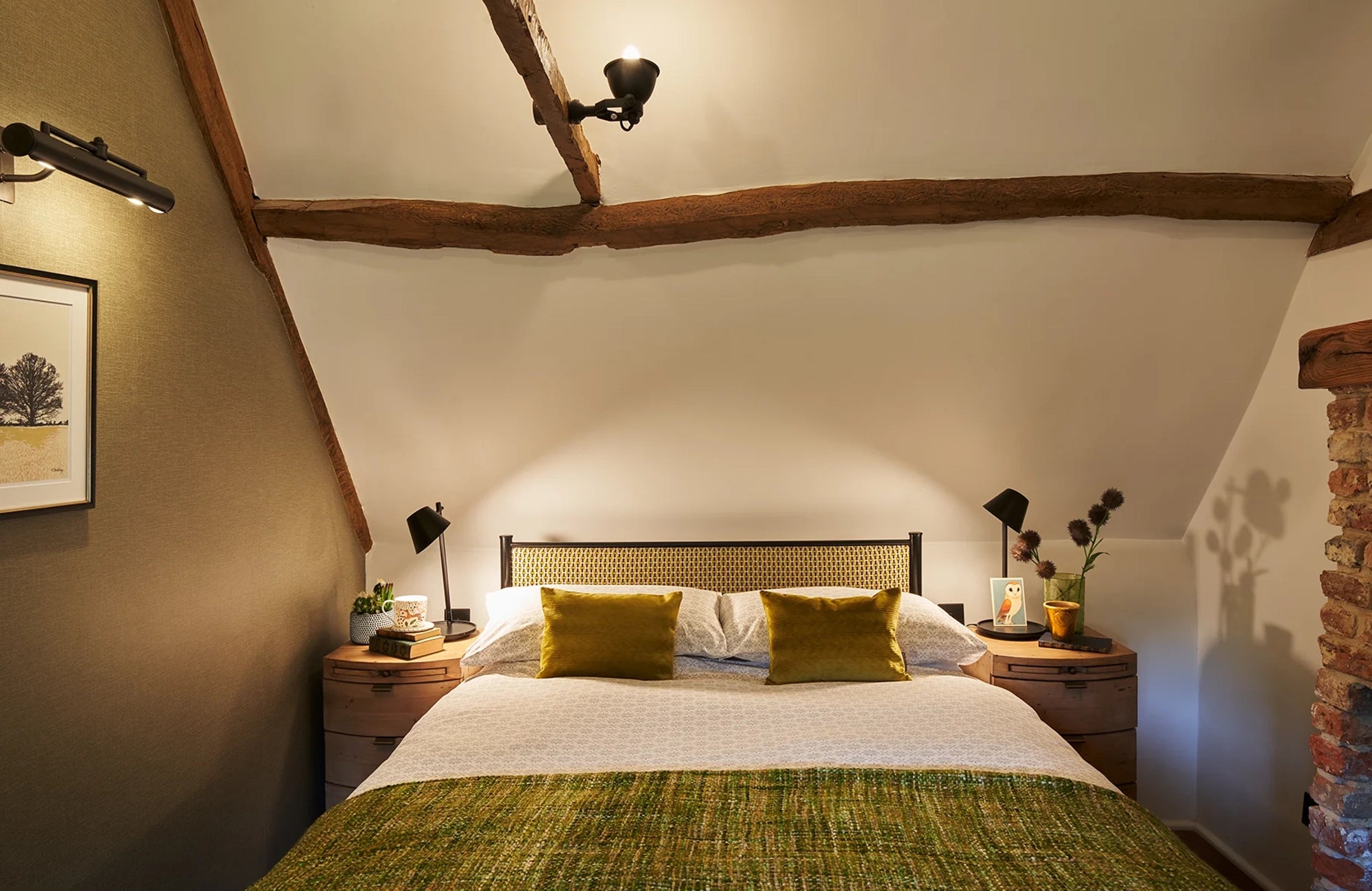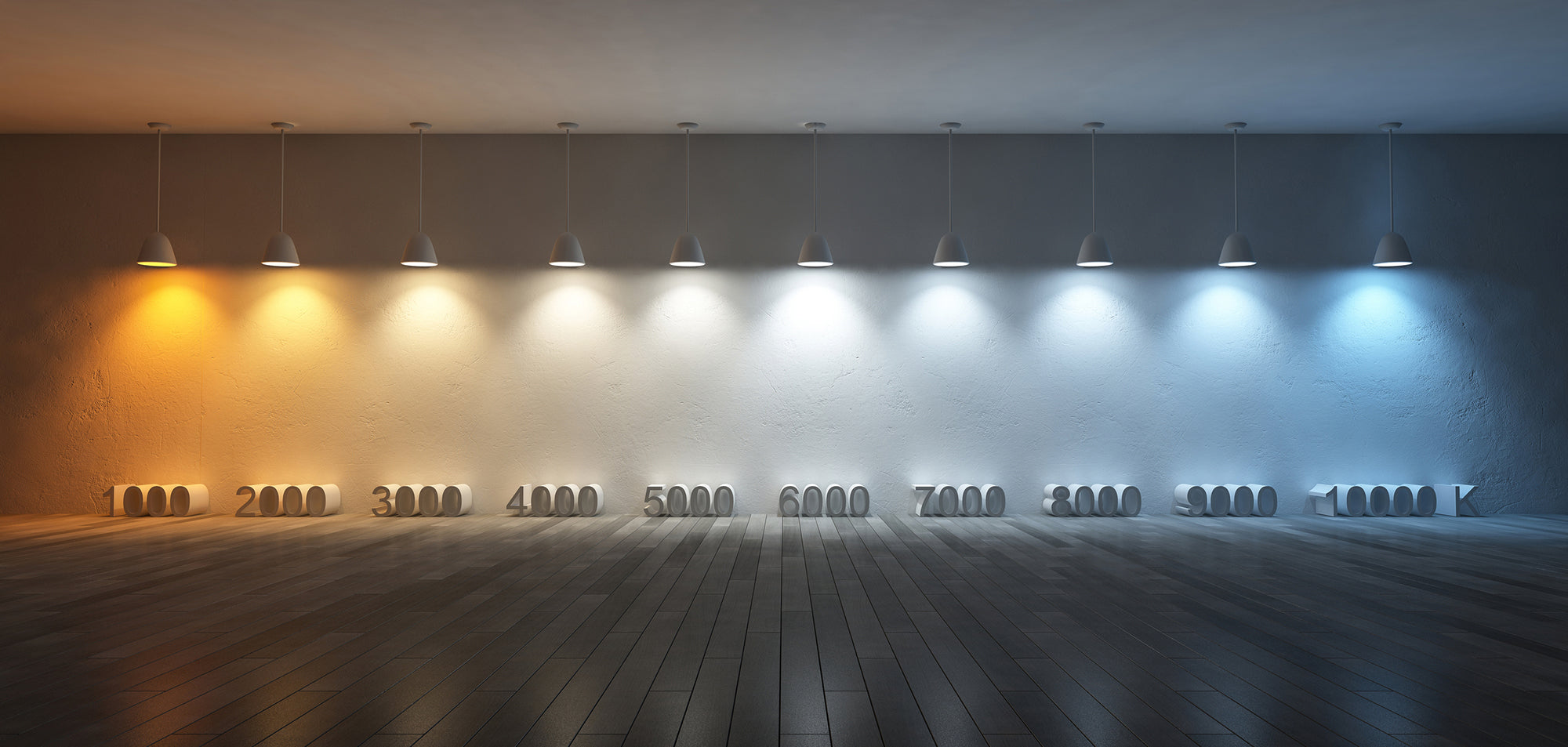THROUGH THE FAWN LENS
How to Layer Lighting for a Beautifully Balanced Home
Lighting plays a vital role in creating a comfortable, functional, and aesthetically pleasing home environment. It sets the mood, influences productivity, and even impacts our health. But navigating the world of lighting options and design principles can feel overwhelming. This comprehensive guide will equip you with the knowledge and tips to transform your home's illumination.

Inage: our Brockenhurst project
UNDERSTANDING LIGHT: THE BASICS
Before diving into specific applications, let's explore some fundamental concepts:

Color Temperature: Measured in Kelvins (K), this refers to the "warmth" or "coolness" of light. Warm light (around 2700K) feels inviting and cosy, while cool light (around 5000K) is energising and promotes focus.
Lumens: This unit measures the total amount of light emitted by a source. Higher lumens equate to brighter light, while lower lumens provide a more subdued effect.
Lux: This unit indicates the illuminance level (light intensity) falling on a surface. Different tasks require varying lux levels; for instance, reading requires higher lux compared to watching a movie.
LIGHTING DESIGN STRATEGIES
Now that we have the basics down, let's explore lighting design strategies to enhance different areas of your home:
1. LAYERING OF LIGHT:
This essential approach involves combining three types of lighting to create a well-rounded illumination scheme:
Ambient Lighting: Provides general overall illumination. This could be recessed ceiling lights, chandeliers, or wall lights. Choose a warm or cool white colour temperature depending on the desired atmosphere.
Task Lighting: Focuses light on specific areas for activities like reading, cooking, or working. Consider table lamps, pendant lights over the kitchen sink, or under-cabinet lighting. Opt for cool white or daylight-equivalent bulbs for task areas.
Accent Lighting: Highlights decorative elements or architectural features, adding visual interest and a touch of drama. This can include track lighting, spotlights, or recessed fixtures with adjustable beams. Experiment with coloured bulbs for a unique touch.
2. LIGHTING FOR DIFFERENT ROOMS
Living Room: Use a combination of ambient and accent lighting. Floor and table lamps with warm white bulbs create a cosy atmosphere, while recessed lights or track lighting can highlight artwork or architectural details. Consider dimmers for added flexibility.
Kitchen: Prioritise task lighting. Under-cabinet lights illuminate countertops, while pendant lights over the sink provide focussed light. General ambient light can come from recessed fixtures or a central pendant. Opt for cool white or daylight bulbs for optimal visual clarity.
Dining Room: Create a warm and inviting ambiance. A dimmer switch on a pendant light hanging low over the table allows you to adjust the mood for intimate dinners or brighter gatherings. Consider wall lights for additional soft light.
Bathroom: Balance task and ambient lighting. Vanity lights with adjustable shades provide focused illumination for grooming, while recessed ceiling lights or wall sconces bathe the space in a soft glow. Opt for cool white or daylight bulbs near the vanity for clear visibility, and choose warm white for overall ambiance.
Bedroom: Promote relaxation with layered lighting. Table lamps with warm white bulbs are ideal for reading in bed. Dimmer switches on the main light source allow for creating a calming atmosphere before sleep. Consider lights on either side of the bed for a luxurious touch.
Home Office: Focus on task lighting. A desk lamp with an adjustable arm provides targeted light for working. Supplement with ambient lighting from a ceiling fixture with cool white or daylight bulbs to minimise eye strain.
3. ADDITIONAL CONSIDERATIONS:
Natural Light: Maximise natural light by keeping windows uncovered and using light-filtering curtains instead of heavy drapes. Strategically place furniture to avoid blocking natural light sources.
Energy Efficiency: Opt for LED bulbs throughout your home. They use less energy, emit less heat, and last significantly longer than traditional incandescent bulbs.
Smart Lighting: Consider incorporating smart bulbs or fixtures that can be controlled remotely via your phone or a voice assistant. This adds convenience and allows for creating lighting automation routines.
Style: Choose fixtures that complement the overall aesthetic of your home. Modern spaces might utilise sleek track lighting and minimalist pendants, while a classic home could benefit from traditional chandeliers and wall lights.
4. TIPS FOR SUCCESS:
Make a Plan: Before purchasing new fixtures, sketch out a lighting plan for each room. This helps visualise the placement and type of lighting needed.
Consider Light Dimmer Switches: Dimmers offer ultimate flexibility, allowing you to adjust the light level for different activities and moods.
Don't Overlight: While adequate lighting is crucial, too much bright light can be harsh and uninviting. Aim for a balance of light and shadow.
Utilise Reflective Surfaces: Mirrors, light-coloured walls, and polished furniture can bounce light around the room, creating a more spacious and airy feel.
Think Beyond the Ceiling: Floor lamps, table lamps, and wall lamps add visual interest and provide task lighting without overwhelming the space with ceiling fixtures.
Embrace Natural Materials: Natural materials like wood, rattan, and fabric on lampshades can add warmth and texture to your lighting scheme.
Don't Forget Portability: Consider portable lamps for creating pools of light in reading nooks or for highlighting artwork temporarily.
Maintenance Matters: Regularly clean your light fixtures, especially recessed lights and ceiling fans, to maximize light output and maintain a clean aesthetic.
5. ADVANCED LIGHTING TECHNIQUES:
For those seeking to elevate their home's illumination beyond the basics, consider these advanced techniques:
Gradual Layering: This approach involves strategically placing lights at different heights to create a more dynamic and visually interesting effect. Imagine floor lamps, wall lights, and recessed lights working together to create layers of illumination.
Hidden Lighting: Recessed fixtures with adjustable beams can be tucked away behind cornicing or within furniture to cast light upwards or downwards, creating a subtle yet sophisticated effect. This is a great way to highlight architectural details or artwork.
Colour Control: Smart bulbs and LED strip lights allow you to change the colour temperature or even display coloured light. Use this to create unique ambiance in different rooms, personalise your space, or set the mood for a specific occasion.
Outdoor Lighting: Don't neglect the exterior of your home. Path lights, porch lights, and strategically placed spotlights enhance curb appeal, improve security, and create a welcoming entrance. Consider solar-powered lights for an eco-friendly option.
6. LIGHTING FOR SPECIFIC NEEDS:
Task Lighting for Specific Hobbies: Tailor your task lighting to your hobbies. Artists might benefit from adjustable task lamps with high lumen output, while musicians could use strategically placed lights to illuminate sheet music.
Creating a Home Cinema Experience: Dimmers are essential for a home cinema. Consider recessed lights with adjustable beams to create a focussed light on the screen while allowing for a dark and immersive viewing experience around the seating area.
Lighting for Children's Rooms: Combine warm white ambient light with task lighting for study areas. Consider dimmable nightlights for a comforting glow and to help children feel secure at night.
Lighting for Seniors: Prioritise safety and comfort when lighting a home for seniors. Increase overall light levels, particularly in areas prone to falls like hallways and bathrooms. Utilise motion sensor lights for added convenience and safety.
7. SUSTAINABLE LIGHTING PRACTICES:
LED Bulbs: As mentioned earlier, LED bulbs offer significant energy savings compared to traditional incandescent bulbs.
Natural Light: Maximise natural light by taking advantage of windows and skylights. This reduces reliance on artificial light sources.
Smart Lighting: Smart lighting systems allow for automation, such as programming lights to turn on and off at specific times. This can help reduce energy consumption when rooms are not in use.
Occupancy Sensors: Installing occupancy sensors in rooms like hallways, closets, and laundry rooms ensures lights are only on when they're needed.
By adopting these lighting tips and strategies, you can transform your home into a space that is not only functional and beautiful but also reflects your personal style and promotes well-being. Remember, lighting is a powerful tool that can set the mood, enhance your comfort, and influence your daily activities. So, unleash your creativity, experiment with different approaches, and let light illuminate your home in the most captivating way.
MORE FROM THE FAWN DESIGN CIRCLE

Traditional Woodworking Joints: Our Complete Guide to Screwless Joinery


